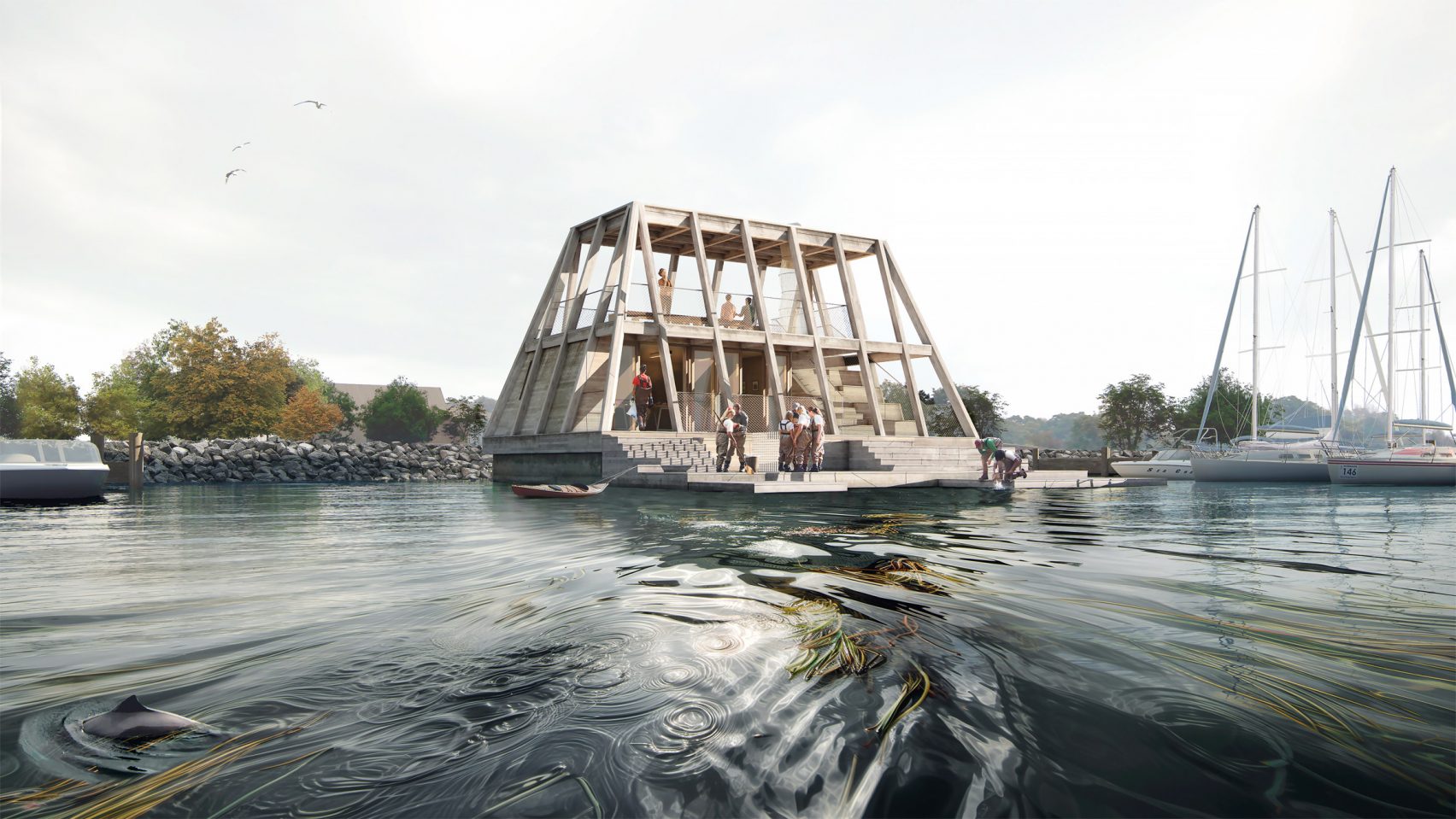EFFEKT and MAST Design Floating Pavilion for Denmark’s Marine Park
Local studios EFFEKT and MAST have proposed Sømærket, a floating pavilion in Denmark intended to be towed between cities to raise awareness about the country’s largest marine nature park, Nature Park Lillebælt. The structure, designed to float on a barge, will feature an underwater exhibition space where visitors can learn about the marine ecosystem and the environmental challenges it faces.
Raising Awareness of Marine Conservation
EFFEKT’s co-founder, Tue Foged, emphasized the urgency of addressing the decline in marine life due to issues like agricultural runoff. The goal of Sømærket is to connect people with the underwater world and inspire a deeper appreciation for marine ecosystems, particularly in the coastal environment of Lillebælt, which is currently under threat.
A Pyramidal Floating Pavilion
Sømærket, designed in collaboration with maritime architecture studio MAST, won an invited competition and is set to begin construction this summer, with a planned launch in 2025. The two-storey timber pavilion will be raised on a reclaimed concrete barge and feature a pyramidal form that stands seven meters above the water, connected to land by a small bridge.
Educational and Recreational Spaces
The pavilion will include an underwater exhibition space, a classroom, and an events area on the upper level, capable of hosting up to 30 people. The top level will offer an observation deck and a crow’s nest lookout accessible via a vertical tunnel lined with fishing nets. The structure will serve as an educational platform for school groups, tourists, and locals, while also providing a base for recreational activities like kayaking, swimming, diving, and fishing.
Mobile and Sustainable Design
Sømærket will be transported along the Lillebælt by tugboat and moored in the cities of Middelfart, Kolding, and Fredericia. The pavilion’s foundation will be an upcycled concrete barge, chosen for its durability and long lifespan in saltwater. The timber structure above water, made from Douglas fir, was selected to create a warm and inviting interior, while also minimizing the pavilion’s carbon footprint.
Inspiration from Maritime Heritage
The design of Sømærket takes inspiration from Denmark’s historical wooden sea marks, which were used to aid in the navigation of boats along the coast. The use of reclaimed materials and wood reflects the project’s commitment to sustainability and environmental stewardship.
Finally, find out more on ArchUp:
Kengo Kuma & Associates Reveals Design for Qatar Pavilion at Expo 2025 Osaka









